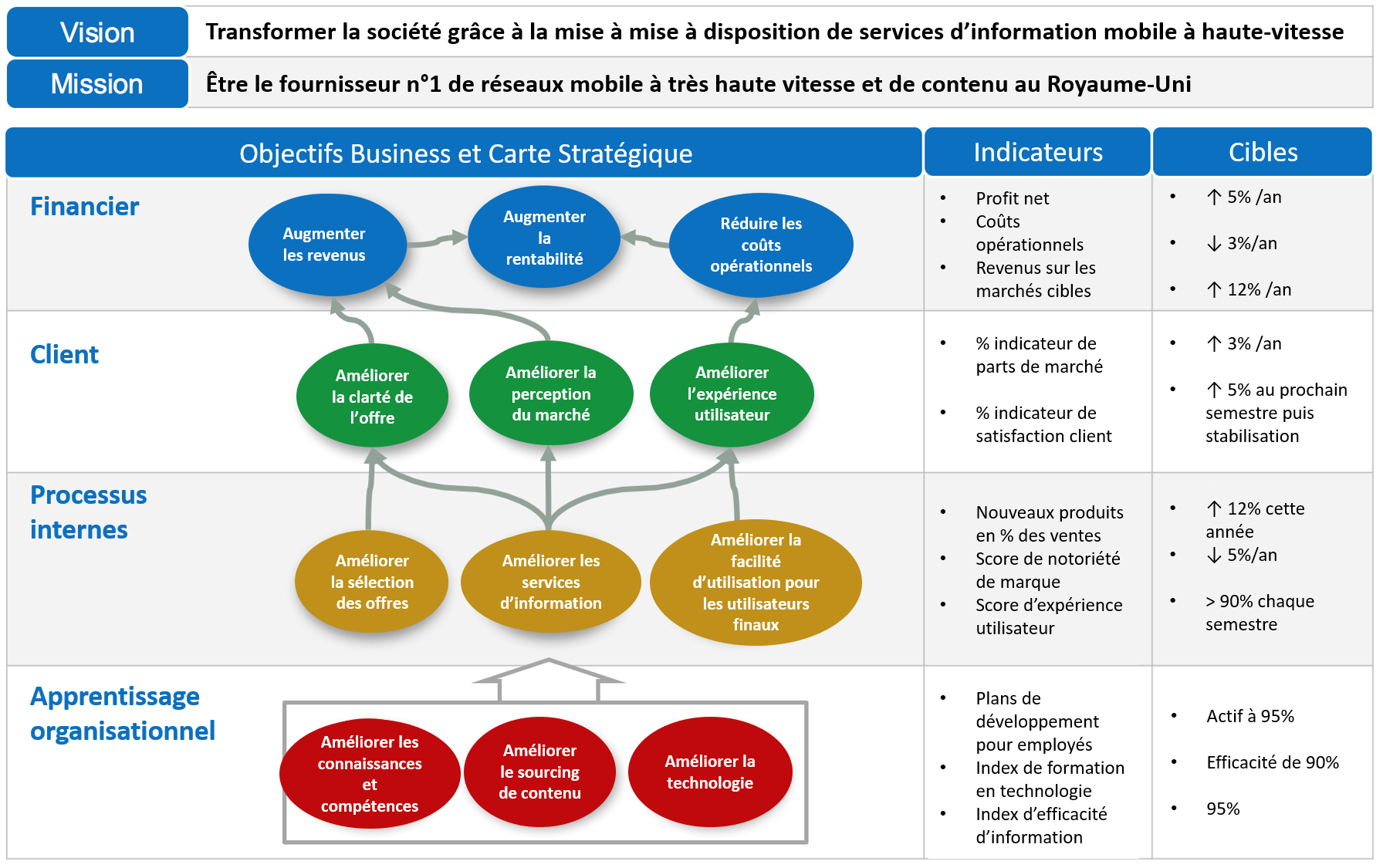To better anticipate risks and avoid the growth crisis of startups, the Learn Assembly team is asking the following question: how can individual and collective indicators be created to empower everyone?
It is in seeking to answer this question that Sophie Cohendet, along with her partner Antoine Amiel, delves into the work of Robert S. Kaplan and David P. Norton, particularly focusing on the Balanced Scorecard (BSC), which gives them an initial solution.
The Balanced Scorecard: What Is It?
The Balanced Scorecard (BSC) is a dashboard aimed at organizing the deployment of strategy. What's interesting about it is that it takes into account all dimensions contributing to its performance, beyond simple financial measures, to create more links between strategy and daily actions.
The BSC considers the following 4 axes, broken down into various indicators (quantitative, qualitative, objective, subjective):
- Financial (What value for our shareholders?)
- Customer (What satisfaction and key value for our customers?)
- Internal processes (In which processes and activities must we excel to deliver expected value?)
- Organizational learning (How to progress and produce more value?)

In fact, more than a performance monitoring tool, the BSC is supposed to be a communication support that aligns visions between the company and the employee, as well as clarifying everyone's roles in organizational learning.
Concretely, for each axis, the following are defined:
- The strategic objective
- All relevant indicators
- Target values
- Associated initiatives
This clarification allows for aligning the organization's various objectives and the cause-and-effect relationships between them. An increase in employee satisfaction rate may lead to an increase in customer satisfaction rate, which in turn may result in higher organization revenues. Here's an example of a BSC:

How Does It Work at Learn Assembly?
The main challenge for the partners was to find a way to empower each employee in their role within the organization by highlighting how their individual actions influence the company's overall performance. So, they broke all the rules and decided to share the BSC, usually reserved for high-level strategic circles, with all employees.
The BSC is a very powerful tool, but like all performance tracking tools, it can quickly become a school exercise done just for the sake of it: It is essential to reconsider the relevance of objectives in light of business evolution. - Antoine Amiel, founder of Learn Assembly
A Global BSC Accessible to All
Following their research, Sophie and her partner chose to build a BSC specific to Learn Assembly. They created a first version of their table together before sharing it with the rest of the team and adjusting it based on their feedback.
For confidentiality reasons, the BSC is not physically materialized but is rather accessible to all employees, consultable by anyone, anytime. It allows for tracking projects at a glance through indicators: green when things are going well, red when they are not.
Every 4 months, the team gathers for a "sky is the limit" meeting during which they review the BSC, take stock, adjust indicators, and build an action plan if necessary. This regular review prevents losing sight of objectives and allows for quick realignment.
A Personal BSC for Everyone
Where Learn Assembly's BSC differs from the traditional approach is the adaptation of the model into a template divided along the same axes for each employee.
During each new hiring, one of the partners spends time with the newcomer to fill out this template based on the BSC model (which happens roughly at the same time as writing the alliance declaration we're talking about here). It concretely illustrates the company's strategy, but also that of the new employee. It's an opportunity for them to reflect on their personal strategy for the year and to enter their own indicators to follow. The partner accompanies them in this process and helps formulate relevant and achievable objectives and indicators.
This document is kept in a shared folder between the partner and the employee, and they can consult it whenever they want, with other employees not having access to it.
Their Feedback
The BSC is a very powerful tool, but like all performance tracking tools, it can quickly become a school exercise done just for the sake of it. It is essential to reconsider the relevance of objectives in light of business evolution. And the tool is not very visual, which doesn't necessarily facilitate its adoption: there are many indicators whose readability is not obvious for everyone. In the end, it's a tool that prompts questions, but remains very conceptual and systemic, and ultimately not so democratic.




